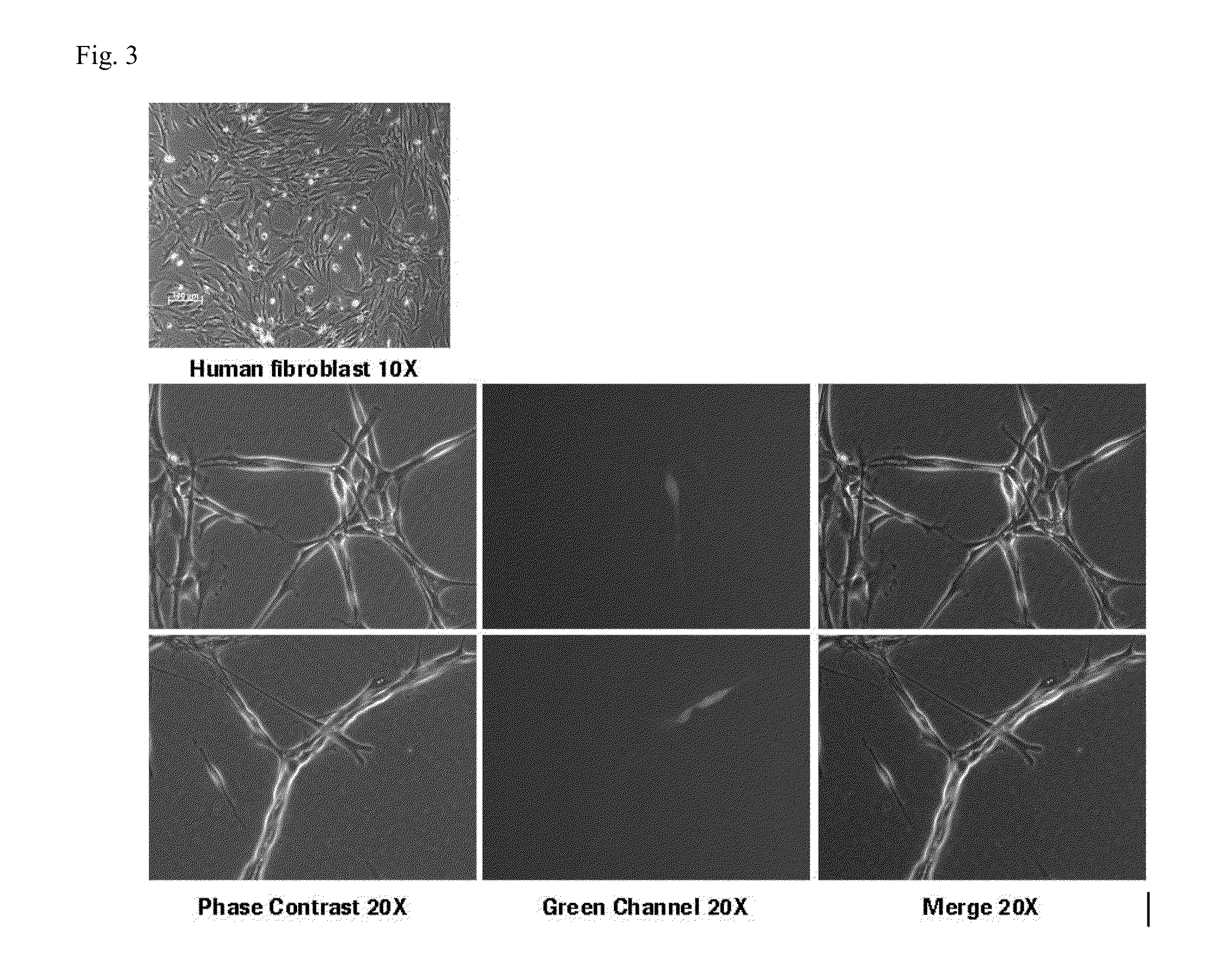Conversion of somatic cells to induced reprogrammed neural stem cells (irnscs)
a neural stem cell and somatic cell technology, applied in the direction of genetically modified cells, skeletal/connective tissue cells, drug compositions, etc., can solve the problems of serious contamination, complicated culture conditions, and limited so as to reduce the risk of undesirable immune responses and limit the regenerative capacity of adult brains
- Summary
- Abstract
- Description
- Claims
- Application Information
AI Technical Summary
Benefits of technology
Problems solved by technology
Method used
Image
Examples
examples
[0048]The method can be illustrated by reference to FIG. 1 herein, which depicts a method according to the invention being used for converting human fibroblasts to neural stem cells (NSCs). In this method human fibroblast were trypsinized at day 0, counted and their viability determined. Between 1.0×105-3.0×105 trypsinized fibroblasts were then resuspended in the induction medium and the combination of genes delivered as lentiviruses. At the induction medium polybrene (hexadimethrine bromide) was added to increase the efficiency of the lentiviruses transduction. The infection was performed for 15 minutes in an eppendorf tube. In combination with the genes, a human Nestin GFP reporter was used. Nestin is a well known marker expressed specifically in NSCs. In the nestin reporter the fluorescent protein GFP is under expression of the human nestin promoter (FIG. 2), therefore it allows an easy screen for induced reprogrammed neural stem cells (irNSCs) GFP+.
[0049]The infected cells were ...
PUM
| Property | Measurement | Unit |
|---|---|---|
| Therapeutic | aaaaa | aaaaa |
Abstract
Description
Claims
Application Information
 Login to View More
Login to View More - R&D
- Intellectual Property
- Life Sciences
- Materials
- Tech Scout
- Unparalleled Data Quality
- Higher Quality Content
- 60% Fewer Hallucinations
Browse by: Latest US Patents, China's latest patents, Technical Efficacy Thesaurus, Application Domain, Technology Topic, Popular Technical Reports.
© 2025 PatSnap. All rights reserved.Legal|Privacy policy|Modern Slavery Act Transparency Statement|Sitemap|About US| Contact US: help@patsnap.com



